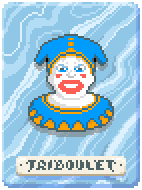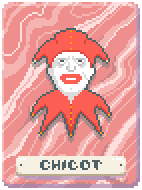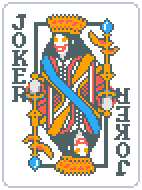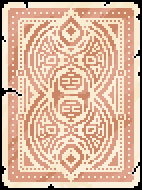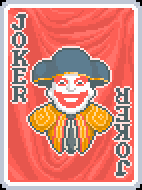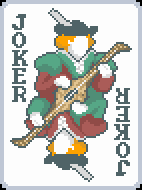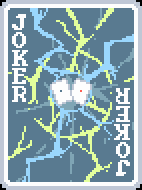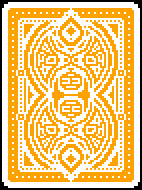Jester - Wikipedia

44 languages- Alemannisch
- العربية
- Azərbaycanca
- 閩南語 / Bân-lâm-gú
- Беларуская
- Български
- Bosanski
- Català
- Čeština
- Cymraeg
- Dansk
- Deutsch
- Eesti
- Español
- Esperanto
- Euskara
- فارسی
- Français
- 한국어
- हिन्दी
- Ido
- Bahasa Indonesia
- Italiano
- עברית
- Қазақша
- Magyar
- Македонски
- Монгол
- Nederlands
- 日本語
- Norsk bokmål
- Norsk nynorsk
- Polski
- Português
- Русский
- Shqip
- Sicilianu
- Simple English
- Suomi
- Svenska
- Татарча / tatarça
- Türkçe
- Українська
- 中文
Edit linksThe modern use of the English word jester did not come into use until the mid-16th century, during Tudor times.1 This modern term derives from the older form gestour, or jestour, originally from French meaning ‘storyteller’ or ‘minstrel’. Other earlier terms included fol, disour, buffoon, and bourder. These terms described entertainers who differed in their skills and performances but who all shared many similarities in their role as comedic performers for their audiences.123
Historyedit
Balatronesedit
Balatro" redirects here. For the video game, see Balatro (video game). In ancient Rome, a balatro (/ˈbɑːlɑːtroʊ/BAH-lah-troh) was a professional jester or buffoon.4Balatrones were paid for their jests, and the tables of the wealthy were generally open to them for the sake of the amusement they afforded.5
There are various theories about the origin of the term. In Horace, Balatro is used as a proper name: Servilius Balatro.6 An old scholiast derives the common word balatro from the proper name, suggesting that buffoons were called balatrones because Servilius Balatro was a buffoon, though others have since objected to this account. Festus derives the word from blatea, and supposes buffoons to have been called balatrones because they were dirty fellows, covered with spots of mud (blateae) from walking.7 Another writer suggests a derivation from barathrum, because they, so to speak, carried their jesting to market, even into the very depth (barathrum) of the shambles (barathrum macelli)8Balatro may be connected with balare, “to bleat like a sheep”, and hence, to speak sillily. Others have suggested a connection with blatero, a busy-body.9
In ancient times, other cultures, such as the Aztecs and the Chinese, also employed cultural equivalents to the jester.1011
English royal court jestersedit
Many royal courts throughout English royal history employed entertainers and most had professional fools, sometimes called “licensed fools”. Entertainment included music, storytelling, and physical comedy. Fool Societies, or groups of nomadic entertainers, were often hired to perform acrobatics and juggling.12
Jesters were also occasionally used as psychological warfare. Jesters would ride in front of their troops, provoke or mock the enemy, and even serve as messengers. They played an important part in raising their own army’s spirits by singing songs and reciting stories.1314
Henry VIII of England employed a jester named Will Sommers. His daughter Mary was entertained by Jane Foole.15
During the reigns of Elizabeth I and James I of England, William Shakespeare wrote his plays and performed with his theatre company the Lord Chamberlain’s Men (later called the King’s Men). Clowns and jesters were featured in Shakespeare’s plays, and the company’s expert on jesting was Robert Armin, author of the book Foole upon Foole. In Shakespeare’s Twelfth Night, Feste the jester is described as “wise enough to play the fool”.16
In Scotland, Mary, Queen of Scots, had a jester called Nichola. Her son, King James VI of Scotland, employed a jester called Archibald Armstrong. During his lifetime Armstrong was given great honours at court. He was eventually thrown out of the King’s employment when he over-reached and insulted too many influential people. Even after his disgrace, books telling of his jests were sold in London streets. He held some influence at court still in the reign of Charles I and estates of land in Ireland. Anne of Denmark had a Scottish jester called Tom Durie. Charles I later employed a jester called Jeffrey Hudson who was very popular and loyal. Jeffrey Hudson had the title of “Royal Dwarf” because he was short of stature. One of his jests was to be presented hidden in a giant pie from which he would leap out. Hudson fought on the Royalist side in the English Civil War. A third jester associated with Charles I was called Muckle John.17
Jester’s privilegeedit
Jester’s privilege is the ability and right of a jester to talk and mock freely without being punished. As an acknowledgement of this right, the court jester had symbols denoting their status and protection under the law. The crown (cap and bells) and sceptre (marotte) mirrored the royal crown and sceptre wielded by a monarch.1819
Martin Luther used jest in many of his criticisms against the Catholic Church.20 In the introduction to his To the Christian Nobility of the German Nation, he calls himself a court jester, and, later in the text, he explicitly invokes the jester’s privilege when saying that monks should break their chastity vows.20
Natural vs artificial foolsedit
 |
This section needs additional citations for verification. Please help improve this article by adding citations to reliable sources in this section. Unsourced material may be challenged and removed.(December 2022) (Learn how and when to remove this message) |
|---|
There are two major groups when it comes to defining fools: artificial fools and natural fools. Natural fools consisted of people who were deemed “mentally defective,” or as having a “deficiency in their education, experience or innate capacity for understanding,” and stood as someone for the rest of society to laugh at.21full citation needed This policy was not generally criticised during its time. Groups of people even saw this act as a positive one, as these “natural” comedians were not typically able to have a job or earn any sort of living on their own. The second group, artificial fools, is what most people in modern times imagine when they hear the word “jester”: someone who comes up with witty and original jokes in order to entertain a royal court. The main difference between the two groups is that a natural fool’s comedy is not done intentionally while an artificial fool’s is.
Political significanceedit
Scholar David Carlyon has cast doubt on the “daring political jester”, calling historical tales “apocryphal”, and concluding that “popular culture embraces a sentimental image of the clown; writers reproduce that sentimentality in the jester, and academics in the Trickster”, but it “falters as analysis”.22
Jesters could also give bad news to the King that no one else would dare deliver. In 1340, when the French fleet was destroyed at the Battle of Sluys by the English, Phillippe VI’s jester told him the English sailors “don’t even have the guts to jump into the water like our brave French”.11
End of traditionedit
After the Restoration, Charles II did not reinstate the tradition of the court jester, but he did greatly patronise the theatre and proto-music hall entertainments, especially favouring the work of Thomas Killigrew. Though Killigrew was not officially a jester, Samuel Pepys in his famous diary does call Killigrew “The King’s fool and jester, with the power to mock and revile even the most prominent without penalty” (12 February 1668).
In the 18th century, jesters had died out except in Russia, Spain, and Germany. In France and Italy, travelling groups of jesters performed plays featuring stylised characters in a form of theatre called the commedia dell’arte. A version of this passed into Britishfolk tradition in the form of a puppet show, Punch and Judy. In France the tradition of the court jester ended with the abolition of the monarchy in the French Revolution.
In 2015, the town of Conwy in North Wales appointed Russel Erwood (aka Erwyd le Fol) as the official resident jester of the town and its people, a post that had been vacant since 1295.2324
Other countriesedit
Festival of the Archers. Master of Frankfurt, 1493. Two jesters are depicted in the centre of the picture. Poland’s most famous court jester was Stańczyk (c. 1480–1560), whose jokes were usually related to political matters, and who later became a historical symbol for Poles.2526
In 2004 English Heritage appointed Nigel Roder (“Kester the Jester”) as the State Jester for England, the first since Muckle John 355 years previously.27 However, following an objection by the National Guild of Jesters, English Heritage accepted they were not authorised to grant such a title.28 Roder was succeeded as “Heritage Jester” by Pete Cooper (“Peterkin the Fool”).29
In Germany, Till Eulenspiegel is a folkloric hero dating back to medieval times and ruling each year over Fasching or Carnival time, mocking politicians and public figures of power and authority with political satire like a modern-day court jester. He holds a mirror to make us aware of our times (Zeitgeist), and his sceptre, his “bauble”, or marotte, is the symbol of his power.
In 17th century Spain, dwarves, often with deformities, were employed as buffoons to entertain the king and his family, especially the children. In Velázquez’s painting Las Meninas two dwarfs are included: Maria Bárbola, a female dwarf from Germany with hydrocephalus, and Nicolasito Portusato from Italy. Mari Bárbola can also be seen in a later portrait of princess Margarita Teresa in mourning by Juan Bautista Martinez del Mazo. There are other paintings by Velázquez that include court dwarves such as Prince Balthasar Charles With a Dwarf.
During the Renaissance Papacy, the Papal court in Rome had a court jester, similar to the secular courts of the time. Pope Pius V dismissed the court Jester, and no later Pope employed one.
In Japan from the 13th to 18th centuries, the taikomochi, a kind of male geisha, attended the feudal lords (daimyōs). They entertained mostly through dancing and storytelling, and were at times counted on for strategic advice. By the 16th century they fought alongside their lord in battle in addition to their other duties.
Tonga was the first royal court to appoint a court jester in the 20th century; Taufa’ahau Tupou IV, the King of Tonga, appointed JD Bogdanoff to that role in 1999.30 Bogdanoff was later embroiled in a financial scandal.31
As a symboledit
The root of the word “fool” is from the Latin follis, which means “bag of wind” or bellows or that which contains air or breath.32
In Tarotedit
In Tarot, “The Fool” is a card of the Major Arcana. The tarot depiction of the Fool includes a man (or less often, a woman) holding a white rose in one hand and a small bundle of possessions in the other with a dog or cat at his heels. The fool is in the act of unknowingly walking off the edge of a cliff, precipice, or other high place.
In literatureedit
In literature, the jester is symbolic of common sense and of honesty, notably in King Lear, where the court jester is a character used for insight and advice on the part of the monarch, taking advantage of his licence to mock and speak freely to dispense frank observations and highlight the folly of his monarch. This presents a clashing irony as a greater man could dispense the same advice and find himself being detained in the dungeons or even executed. Only as the lowliest member of the court can the jester be the monarch’s most useful adviser.
In Shakespeareedit
Main article: Shakespearean fool The Shakespearean fool is a recurring character type in the works of William Shakespeare. Shakespearean fools are usually clever peasants or commoners that use their wits to outdo people of higher social standing. In this sense, they are very similar to the real fools, and jesters of the time, but their characteristics are greatly heightened for theatrical effect.33 The “groundlings” (theatre-goers who were too poor to pay for seats and thus stood on the ‘ground’ in the front by the stage) that frequented the Globe Theatre were more likely to be drawn to these Shakespearean fools. However they were also favoured by the nobility. Most notably, Queen Elizabeth I was a great admirer of the popular actor who portrayed fools, Richard Tarlton. For Shakespeare himself, however, actor Robert Armin may have proved vital to the cultivation of the fool character in his many plays.34
Modern usageedit
Buffoonedit
Buffoon" redirects here. For the film, see Buffoon (film). See also: Goofball comedy, Absurd humour, and Slapstick comedy In a similar vein, a buffoon is someone who provides amusement through inappropriate appearance or behaviour. Originally the term was used to describe a ridiculous but amusing person. The term is now frequently used in a derogatory sense to describe someone considered foolish, or someone displaying inappropriately vulgar, bumbling or ridiculous behaviour which is a source of general amusement. The term originates from the old Italian “buffare”, meaning to puff out one’s cheeks35 that also applies to bouffon. Having swelled their cheeks they would slap them to expel the air and produce a noise which amused the spectators.36
Carnival and medieval reenactmentedit
Today, the jester is portrayed in different formats of medieval reenactment, Renaissance fairs, and entertainment, including film, stage performance, and carnivals. During the Burgundian and the Rhenishcarnival, cabaret performances in local dialect are held. In Brabant this person is called a “tonpraoter” or “sauwelaar”, and is actually in or on a barrel. In Limburg they are named “buuttereedner” or “buutteredner” and in Zeeland they are called an “ouwoer”. They all perform a cabaret speech in dialect, during which many current issues are reviewed. Often there are local situations and celebrities from local and regional politics who are mocked, ridiculed and insulted. The “Tonpraoter” or “Buuttereedner” may be considered successors of the jesters.37
Notable jestersedit
Main article: List of jesters
Historicaledit
- Triboulet (1479–1536), court jester of Kings Louis XII and Francis I of France
- Stańczyk (c. 1480–1560), Polish jester
- João de Sá Panasco (fl. 1524–1567), African court jester of King John III of Portugal, eventually elevated to gentleman courtier of the Royal Household and Knight of St. James
- Jane Foole (c. 1543–1558), natural fool of Catherine Parr and Mary I of England
- Will Sommers (died 1560), court jester of King Henry VIII of England
- Chicot (c. 1540–1591), court jester of King Henry III of France
- Mathurine de Vallois (fl. 1589 – fl. 1627), court jester of Henry III of France and Henry IV of France
- Archibald Armstrong (died 1672), jester of King James I of England
- Jeffrey Hudson (1619–c. 1682), “court dwarf” of Henrietta Maria of France
- Jamie Fleeman (1713–1778), the Laird of Udny’s Fool
- Perkeo of Heidelberg, 18th century, jester of Prince Charles III Philip, Elector Palatine
- Sebastian de Morra, (died 1649) court dwarf and jester to King Philip IV of Spain
- Don Diego de Acedo, court dwarf and jester to Philip IV of Spain
- Roulandus le Fartere, a medieval flatulist who lived in twelfth-century England
Modern-day jestersedit
- Jesse Bogdonoff (b. 1955), court jester and financial advisor to King Taufa’ahau Tupou IV of Tonga3839
- Russel Erwood (b. 1981), known as Erwyd le Fol, is the 2nd official resident jester of Conwy in North Wales replacing the jester of 12954041
Fictional jestersedit
- Rigoletto – eponymous jester to the Duke of Mantua in Giuseppe Verdi’s 1851 opera Rigoletto
- Yorick – dead court jester in William Shakespeare’s play Hamlet
- Puck – court jester to the king of the fairies, Oberon in Shakespeare’s A Midsummer Night’s Dream
- Jack Point – a ‘strolling jester’ in Gilbert and Sullivan’s 1888 Savoy Opera, The Yeomen of the Guard
- Nights - protagonist in the 1996 video game Nights into Dreams
- Dimentio - antagonist in the 2007 video game Super Paper Mario
- Jevil - secret boss in the 2018 video game deltarune
- Pomni – protagonist in the 2023 animated series The Amazing Digital Circus
Galleryedit
 |
This section contains an unencyclopedic or excessive gallery of images. Please help improve the section by removing excessive or indiscriminate images or by moving relevant images beside adjacent text, in accordance with the Manual of Style on use of images. (June 2022) (Learn how and when to remove this message) |
|---|
- John Dawson Watson – Friends in Council
- Hinric Hasenberger, the Court Jester by David Klöcker Ehrenstrahl, 1652
- “Family of Henry VIII with Will Sommers on the far right and probably Jane Foole on the far left
- 17th-century engraving of Will Sommers, Henry VIII’s jester
- Queen Henrietta Maria with Sir Jeffrey Hudson by Van Dyck
- A court jester, carrying a marotte, selected for the Pageant of Empire in 1909
- Portrait of the Ferrara Court Jester Gonella by Jean Fouquet 1445
- Laughing jester, unknown Early Netherlandish artist (possibly Jacob Cornelisz van Oostsanen), circa 1500
- Susuhunan jester participating in the “Garebeg Moeloed” procession (circa 1920s), Java, Indonesia
- Stańczyk, by Jan Matejko.The Polish jester is the only person at a 1514 royal ball troubled by the news that the Russians have capturedSmolensk.
- Jester in Weingarten, Germany, in 2015
- Masquerade by Golovin – Jester with hunch (1917, Bakhrushin museum)
- Portrait of the Jester Balakirev (1699–1763)
- The Court Jester of Tabbyland
- Шут. Фрагмент миниатюры “Gaharié recevant le chapel” из “Романа о Ланселоте” (Français 112 (1), fol. 45), ок. 1470
- Jester-doll made by Olina Ventsel (1938–2007)
- Illustration p. 284 from “Queen of the Jesters” Caption: Brought it down with a Crash upon the Head of Henri de Villefort. Illustrator unknown; text by Max Pemberton.
- Venne Woman and a jester
- Man dressed as a jester, with a fool’s cap, motley and white tights.
- Statue of a jester depicted in the book Letters from England by Karel Čapek
- Oil on panel, signed with monogram, bears inscribed label for the Dundee Fine Art Exhibition, 1877, attached opt the reverse, 23.7 × 15.5 cm.
- Private collection, oil on canvas. Jacob Jordaens (1641–1645).
- Jester Resting on a chair by William Merritt Chase, 1875, the work is one of several trial poses William Merritt Chase painted as preparation for his Keying Up- The Court Jester
- P. B. Abery (1877?–1948) & Wallace Jones
- The Court Jester by John Watson Nicol, 1895, oil on canvas, 41 × 57 cm. (16.1 × 22.4 in.)
- Rahere, Bouffon de Henry I et de la Reine Matilda, début 1100.
- Chase William Merrit
- “Keying Up” – The Court Jester by William Merritt Chase 1875. (Pennsylvania Academy of the Fine Arts.)
- Caricature of a court jester of Philip the Good, duke of Burgundy, in the 16th century Recueil d’Arras, a collection of portraits copied by Jacques de Boucq
- William Burges, English architect
- Self Portrait in a Jester’s Costume
- The Jester Barbarossa by Francisco Goya
- Royal Jester Stańczyk
- Jester Knight Christoph by Hans Wertinger (1515, Thyssen-Bornemisza, Madrid)
- Akram Mutlak Ménage À Trois Öl auf Leinwand
- Bouffon
- A jester with ass’s ears
- Anonymous German engraving, 16th century
See alsoedit
-
Comedy portal
-
Basil Fool for Christ
-
Cap and bells
-
Clowns
-
Clown society
-
Drollery
-
Fool (stock character)
-
Fool’s literature
-
Foolishness for Christ
-
Fools Guild, California jester-themed entertainment troupe
-
Harlequin
-
Itinerant poet
-
Joker (character)
-
Joker (playing card)
-
King Momo
-
Madame d’Or
-
Marotte – the staff often carried by jesters
-
Master of the Revels
-
Punakawan, comedic sidekick in Javanese tales
-
Skomorokh
-
Trickster
Footnotesedit
- ^ abSoutworth, John (1998). Fools and Jesters at the English Court. Stroud: Sutton Publishing. pp. 89–93. ISBN 0-7509-1773-3.
- ^Welsford, Enid (1935). The Fool: His Social & Literary History. London: Faber & Faber. pp. 114–115.
- ^“Jester”. Online Etymology Dictionary. Retrieved 28 October 2012.
- ^Horace Sat. i. 2. 2. (cited by Allen)
- ^Notes and Queries: A Medium of Inter-Communication for Literary Men, Artists, Antiquaries, Genealogists, Etc. Bell. 1868.
- ^Sat ii. 8. 21 (cited by Allen)
- ^Pauli Diaconi excerpta ex libris Pompeii Festi de significatione verborum, liber II, sub voce. See also here.
- ^Hor. Ep. i. 15. 31. (cited by Allen)
- ^Gell. i. 15. (cited by Allen)
- ^“Jester”. Encyclopædia Britannica. Retrieved 2012-06-07.
- ^ abOtto, Beatrice (2001). Fools Are Everywhere: The Court Jester Around the World. Chicago: University of Chicago Press. ISBN 978-0-226-64091-4.
- ^Kelly, Debra (2020-12-26). “What It Was Really Like To Be A Court Jester - Grunge”. Grunge.com. Retrieved 2022-10-16.
- ^sheldon, Natasha (2018-09-19). “The Role of Fool was a Staple in Medieval Culture… In Some of the Most Unexpected Ways”. History Collection. Retrieved 2022-10-16.
- ^Kelly, Debra (2020-12-26). “What It Was Really Like To Be A Court Jester - Grunge”. Grunge.com. Retrieved 2022-10-16.
- ^Westfahl, Gary (2015-04-21). A Day in a Working Life: 300 Trades and Professions through History 3 volumes: 300 Trades and Professions through History. ABC-CLIO. ISBN 978-1-61069-403-2.
- ^Shakespeare, William (1906). The Works of Shakespeare ….: Twelfth night; or, What you will, ed. by M. Luce. Methuen & Company Limited.
- ^Buckle, Henry Thomas (1872). The Miscellaneous and Posthumous Works of Henry Thomas Buckle. Longmans, Green and Company.
- ^“Medieval Jesters – And their Parallels in Modern America”. History is Now Magazine, Podcasts, Blog and Books | Modern International and American history. 13 January 2019. Retrieved 2022-02-18.
- ^Billington, Sandra. “A Social History of the Fool”, The Harvester Press, 1984. ISBN 0-7108-0610-8
- ^ abHub Zwart (1996), Ethical consensus and the truth of laughter: the structure of moral transformations, Morality and the meaning of life, vol. 4, Peeters Publishers, p. 156, ISBN 978-90-390-0412-8
- ^Swain 1–2
- ^Carlyon, D. (2002). “The Trickster as Academic Comfort Food”. The Journal of American Culture. 25 (1–2): 14–18. doi:10.1111/1542-734X.00003.
- ^“Welsh town appoints first official jester in 700 years”. NY Daily News. Archived from the original on 2018-10-11. Retrieved 2016-10-14.
- ^Day, Liz (2015-08-08). “This official town jester can balance a flaming barbecue on his head..!”. walesonline. Retrieved 2016-10-14.
- ^Janusz Pelc; Paulina Buchwald-Pelcowa; Barbara Otwinowska (1989). Jan Kochanowski 1584-1984: epoka, twórczość, recepcja (in Polish). Lublin: Wydawnictwo Lubelskie. pp. 425–438. ISBN 978-83-222-0473-3.
- ^Jan Zygmunt Jakubowski, ed. (1959). Przegląd humanistyczny (in Polish). 3. Warsaw: Państwowe Wydawnictwo Naukowe: 200.{{cite journal}}: Missing or empty |title= (help)
- ^“Jesters joust for historic role”. BBC News. 2004-08-08. Retrieved 2010-05-06.
- ^Griffiths, Emma (2004-12-23). “Jesters get serious in name row”. BBC News. Retrieved 2012-07-11.
- ^“Jester completes 100-mile tribute”. BBC News. 2006-08-09. Retrieved 2012-07-11.
- ^“Tonga royal decree appointing JD Bogdanoff as court jester”. Archived from the original(JPEG) on 2012-11-06. Retrieved 2009-10-29.
- ^“Tongan court jester faces trial”. BBC News. 11 August 2003. Retrieved 2009-10-29.
- ^“Online Etymology Dictionary”. www.etymonline.com. Retrieved 2017-03-30.
- ^Warde, Frederick B. (1913). The fools of Shakespeare: an … - Frederick B. Warde - Google Boeken. Retrieved 2011-12-24.
- ^“History of the Fool”. Foolsforhire.com. Archived from the original on 2008-10-11. Retrieved 2011-12-24.
- ^Encyclopædia Britannica; or A Dictionary of Arts, Sciences, and Miscellaneous Literature, Volume 4. Archibald Constable and Company. 1823. p. 780.
- ^The National Cyclopaedia of Useful Knowledge Vol.III, London (1847), Charles Knight, p.918
- ^Home Kalender Nieuws Zoekertjes Albums Copyright. “Wat is carnaval?”. Fen Vlaanderen (in Flemish). Retrieved 2014-01-23.
- ^“Tongan court jester faces trial”. 2003-08-11. Retrieved 2023-10-17.
- ^Joel Gibson. (2006, September 23). Disgraced court jester no laughing matter. Sydney Morning Herald, The, 17.
- ^“Conwy jester to take new job ‘seriously’”. BBC News. 2015-07-16. Retrieved 2016-10-14.
- ^“Bristol juggler to become North Wales town’s first official jester in 700 years”. Bristol Post. 2015-07-19. Archived from the original on 2015-08-18. Retrieved 2016-10-14.
Referencesedit
- Billington, Sandra A Social History of the Fool, The Harvester Press, 1984. ISBN 0-7108-0610-8
- Doran, JohnA History of Court Fools, 1858
- Hyers, M. Conrad, The Spirituality of Comedy: comic heroism in a tragic world 1996 Transaction Publishers ISBN 1-56000-218-2
- Otto, Beatrice K., “Fools Are Everywhere: The Court Jester Around the World,” Chicago University Press, 2001
- Southworth, John, Fools and Jesters at the English Court, Sutton Publishing, 1998. ISBN 0-7509-1773-3
- Swain, Barbara. “Fools and Folly During the Middle Ages and the Renaissance” Columbia University Press, 1932.
- Welsford, Enid: The Fool : His Social and Literary History (out of print) (1935 + subsequent reprints): ISBN 1-299-14274-5
- Janik, Vicki K. (ed.) (1998). Fools and Jesters in Literature, Art, and History: A Bio-bibliographical Sourcebook. Greenwood Publishing Group, USA. ISBN 0-313-29785-1.
This article incorporates text from a publication now in the public domain: Smith, William, ed. (1870). “Balatro”. Dictionary of Greek and Roman Antiquities. London: John Murray. p. 183.
External linksedit



- Foolish Clothing: Depictions of Jesters and Fools in the Middle Ages and Renaissance What 14th-16th century jesters wore and carried, as seen in illustrations and museum collections.
- Costume (Jester Hat), ca. 1890-1920, in the Staten Island Historical Society Online Collection Database
| - v - t - e Humor and wit characters |
|---|
| Indian |
| Romanian |
| Other |
| Related subjects |
Authority control databases: National  |
- Germany - Israel - United States - Latvia - Czech Republic |
|---|
このサイトはコレクションに関連する記事のみを収集しています。元のテキストを表示するには、以下のリンクをコピーして開いてください:Jester - Wikipedia

